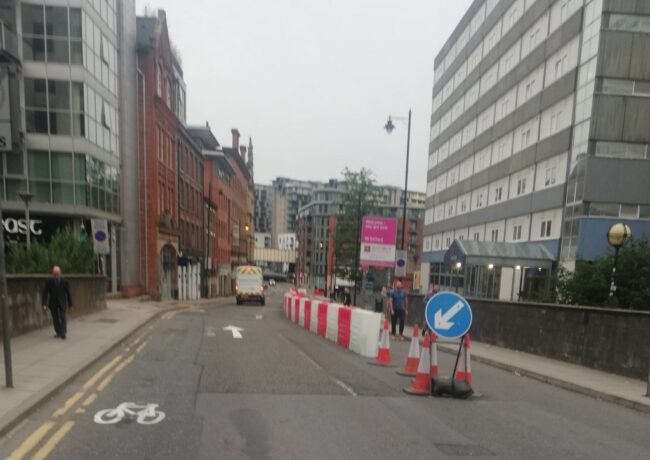Salford eyes more pop-up cycle lanes
The council aims to implement transport infrastructure projects including a bus gate on Chapel Street East and Victoria Bridge Street, and several pop-up cycle lanes, after receiving £1.5m of active travel funding post pandemic.
Salford City Council, like other Greater Manchester boroughs, secured £500,000 from the Greater Manchester Mayor’s Challenge Fund, and an additional £1m from the first tranche of the Department for Transport’s Emergency Active Travel Grant announced earlier this year, to facilitate active travel such as walking and cycling.
Of the money provided by the Greater Manchester Combined Authority, Salford has so far spent £110,000 implementing various initiatives to make it easier for people to avoid public transport and maintain social distancing.
These include making Blackfriars a one-way route, creating a pop-up cycling lane, and 2km of additional walking and cycling routes on Irwell Street, Blackfriars Street and Liverpool Street.
With the latest funding, the council plans to create further cycle lanes on the Oldfield Road Corridor, Liverpool Street and Chapel Street East by mid-September.
Additionally, a bus gate on Chapel Street, after the junction with Victoria Bridge Street, is proposed. This is intended to restrict general traffic travelling north-east towards Victoria Street, easing congestion and making the road safer for cyclists and pedestrians.
Salford claims that one million cycling trips are now being made each week across Greater Manchester, an increase of 34% on pre-lockdown levels. Council officers are now working on a delivery programme to fully utilise the grant by the end of March 2021, the authority added.
The £1m given to Salford from Whitehall’s active travel pot accounted for 34% of the total £3.2m awarded to Greater Manchester authorities. Transport for Greater Manchester is now putting togetehr a £12.7m bid for the second tranche of active travel funding offered by the Government.
Councils are obliged to spend the money on interventions that reallocate road space to walking and cycling, such as pop=up cycle lanes, and the DfT requires the projects to be delivered by the middle of October.




